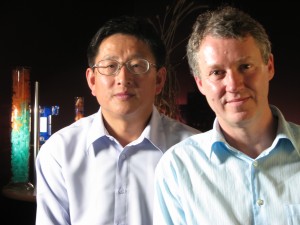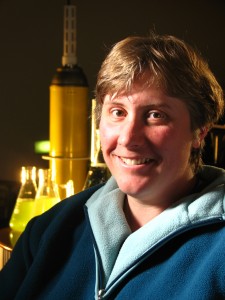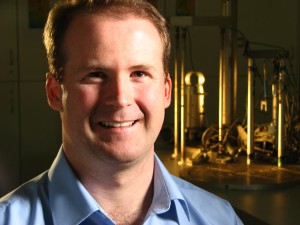A new report released today by the Centre for International Forestry Research (CIFOR) says immediate measures are necessary to ensure vulnerable forests and those that rely on them for their livelihood aren’t subject to the devastating effects of climate change.
Astronomy bulletin: 8 November 2008
The 2009 International Year of Astronomy in Australia
I’m writing to update you on planning for the International Year of Astronomy 2009 in Australia, and to seek your input.
We already know of over 120 events being planned for next year. And if we haven’t heard about yours yet, we’d like to! [Read more…] about Astronomy bulletin: 8 November 2008
A clean, safe vaccine booster
Most vaccines need a ‘magic’ booster or adjuvant to boost our immune response to the vaccine. But the best adjuvants are too toxic for human use.
Now NZ scientists believe they have created a powerful and safe adjuvant and are trialling it as part of a new cancer vaccine. [Read more…] about A clean, safe vaccine booster
Counting viruses and mustering molecules
How many viruses are there in your blood? How many dangerous nano-particles in your car exhaust?
qViro is a revolutionary New Zealand invention that offers the potential to quickly and cheaply answer these questions. It’s a feature of Ausbiotech – the national biotechnology conference – being held in Melbourne today. [Read more…] about Counting viruses and mustering molecules
Put the Lord of the Rings supercomputer on your desktop
From today, thousands of Australian researchers have access to the power of the computing cluster that created the Lord of the Rings and King Kong.
By using a new service called Green Button, professional scientists and students will get instant access on their desktop to a cluster of 3,000 processors based in Wellington, New Zealand, to perform fast genetic analysis. [Read more…] about Put the Lord of the Rings supercomputer on your desktop
A hero of women and science: 2008 Prime Minister’s Prize for Science
Ian Frazer
Follow this link to Ian Frazer’s acceptance speech: http://www.uq.edu.au/news/?article=16238
Ian Frazer has created four vaccines to fight cervical cancer. Two of them-Gardasil and Cervarix-are now on the market. Both prevent infection with the virus responsible for most cervical cancers. The other two vaccines are in clinical trials and are designed to treat women who have already been infected.
And Ian isn’t finished-he’s already working on the next generation of cervical cancer vaccines. But his greatest challenge is to get the vaccines to where they can do most good, in developing countries where screening programs are not widely available and 200,000 women die every year from cervical cancer.
Only then will his battle against cervical cancer be complete.
[Read more…] about A hero of women and science: 2008 Prime Minister’s Prize for Science
Silicon back in the race for quantum computers
The odds that a futuristic quantum computer will be built of silicon have received a boost, thanks to new technology recently invented by researchers in the Centre for Quantum Computer Technology (CQCT).
[Read more…] about Silicon back in the race for quantum computers
Gene silencing triggers a new revolution: 2007 Prime Minister’s Prize for Science
 Peter Waterhouse and Ming-Bo Wang
Peter Waterhouse and Ming-Bo Wang
The human genome project found we have around 32,000 genes—only a few more than other animals, insects and most plants. Knowing how those genes are turned on and off is a key to understanding how a few thousand genes interact to create a human, a fly or a wheat plant.
[Read more…] about Gene silencing triggers a new revolution: 2007 Prime Minister’s Prize for Science
‘Sim’ ocean satisfies: 2007 Science Minister’s Prize for Life Scientist of the Year
Protecting the engineering giants of the ocean: 2007 Malcolm McIntosh Prize for Physical Scientist of the Year
 Mark Cassidy
Mark Cassidy
Mark Cassidy is battling immutable forces of nature – storms, ocean currents and earthquakes – that threaten to topple the giant oil and gas platforms off the North West coast of Australia.
From his geophysics laboratory at the University of Western Australia, he models the way the feet of these giant platforms push into the mud on the ocean floor. And his models work. His advice is sought by the designers and builders of the platforms and his modelling has led to changes to international safety guidelines. The 33 year-old civil engineer is also one of Australia’s youngest professors. [Read more…] about Protecting the engineering giants of the ocean: 2007 Malcolm McIntosh Prize for Physical Scientist of the Year




